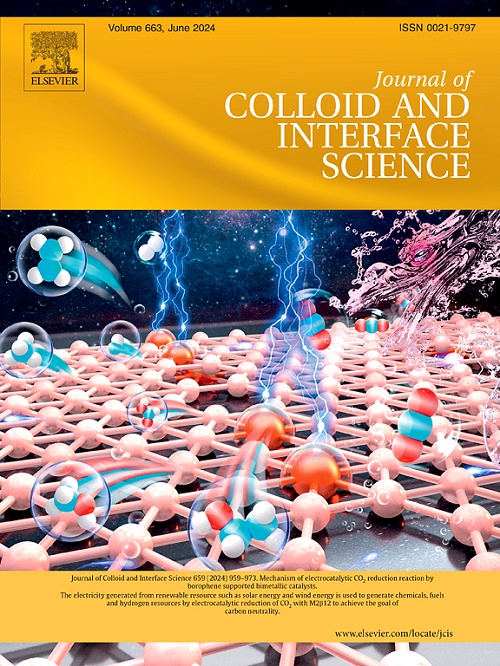A mitochondrial targeted near-infrared ratio fluorescent probe for ferroptosis related hydrogen polysulfides imaging in arthritis
IF 9.4
1区 化学
Q1 CHEMISTRY, PHYSICAL
引用次数: 0
Abstract
Hydrogen polysulfide (H2Sn, n > 1), as an active sulfur substance derived from hydrogen sulfide, is considered a new potential signaling molecule that occupies an irreplaceable position in physiological regulation and signal transduction processes. Ferroptosis, an iron-dependent form of programmed cell death, is caused by the iron dependent accumulation of lipid peroxides associated with reactive oxygen species. The process of ferroptosis generates abundant reactive oxygen species, indirectly promoting the elevation of intracellular hydrogen polysulfide levels. There is evidence to suggest a close relationship between ferroptosis and arthritis. This work developed a near-infrared ratiometric fluorescent probe (Mito-S4) with a large Stokes shift (∼240 nm) based on nucleophilic addition mechanism, which can quickly (18 s) and sensitively (Detection Limit = 0.165 μM) detect H2Sn in cells. The mechanism of action was verified through theoretical calculations and nuclear magnetic analysis, and the probe Mito-S4 was successfully applied to visualize H2Sn in cellular mitochondria. The cell imaging results showed that the probe successfully achieved tracking of H2Sn in mitochondria during inflammation and ferroptosis processes. In addition, pathological section experiments have confirmed that the probe has good in vivo imaging ability. It is worth mentioning that further in vivo imaging experiments have for the first time delved into the mechanism of H2Sn in the process of ferroptosis in arthritis, which can provide new research methods and therapeutic targets for the treatment of arthritis.

一种线粒体靶向近红外比例荧光探针用于关节炎中与铁下垂相关的多硫化氢成像
多硫化氢(H2Sn, n >;1),作为硫化氢衍生的活性硫物质,被认为是一种新的潜在信号分子,在生理调节和信号转导过程中占有不可替代的地位。铁死亡是一种铁依赖性的程序性细胞死亡形式,是由与活性氧相关的脂质过氧化物的铁依赖性积累引起的。铁下垂过程产生丰富的活性氧,间接促进细胞内多硫化氢水平的升高。有证据表明,铁下垂与关节炎有密切关系。本研究基于亲核加成机理,开发了一种具有大Stokes位移(~ 240 nm)的近红外比例荧光探针(Mito-S4),可快速(18 s)、灵敏(检测限= 0.165 μM)检测细胞中的H2Sn。通过理论计算和核磁分析验证了其作用机制,并成功应用探针Mito-S4在细胞线粒体中可视化H2Sn。细胞成像结果显示,探针在炎症和铁下垂过程中成功地跟踪了线粒体中的H2Sn。此外,病理切片实验证实该探针具有良好的体内成像能力。值得一提的是,进一步的体内成像实验首次深入探讨了H2Sn在关节炎铁下垂过程中的作用机制,可为关节炎的治疗提供新的研究方法和治疗靶点。
本文章由计算机程序翻译,如有差异,请以英文原文为准。
求助全文
约1分钟内获得全文
求助全文
来源期刊
CiteScore
16.10
自引率
7.10%
发文量
2568
审稿时长
2 months
期刊介绍:
The Journal of Colloid and Interface Science publishes original research findings on the fundamental principles of colloid and interface science, as well as innovative applications in various fields. The criteria for publication include impact, quality, novelty, and originality.
Emphasis:
The journal emphasizes fundamental scientific innovation within the following categories:
A.Colloidal Materials and Nanomaterials
B.Soft Colloidal and Self-Assembly Systems
C.Adsorption, Catalysis, and Electrochemistry
D.Interfacial Processes, Capillarity, and Wetting
E.Biomaterials and Nanomedicine
F.Energy Conversion and Storage, and Environmental Technologies

 求助内容:
求助内容: 应助结果提醒方式:
应助结果提醒方式:


